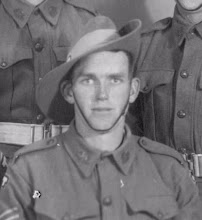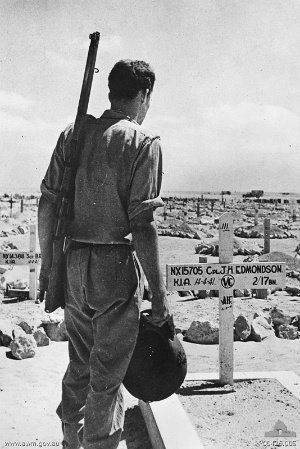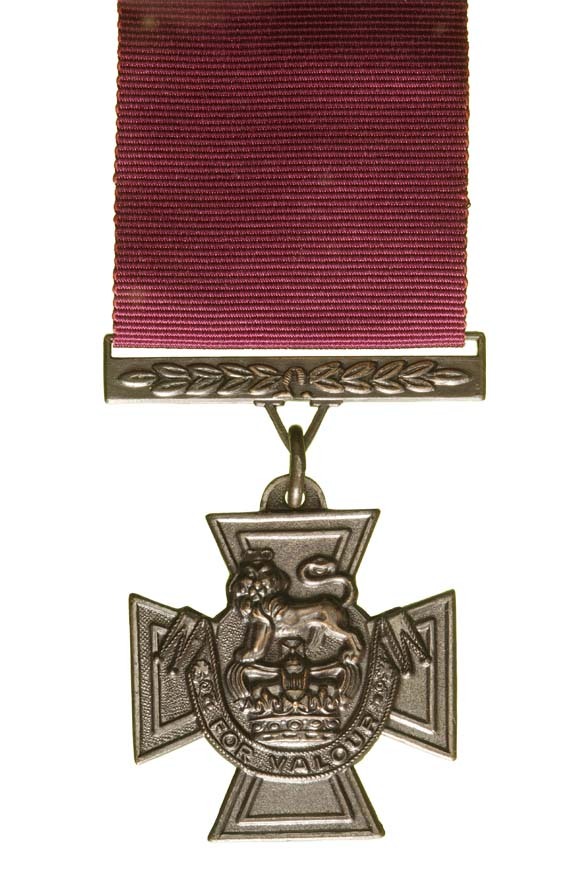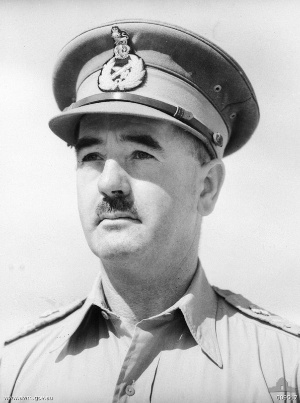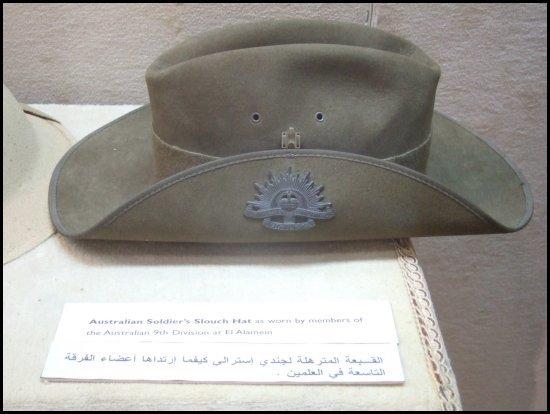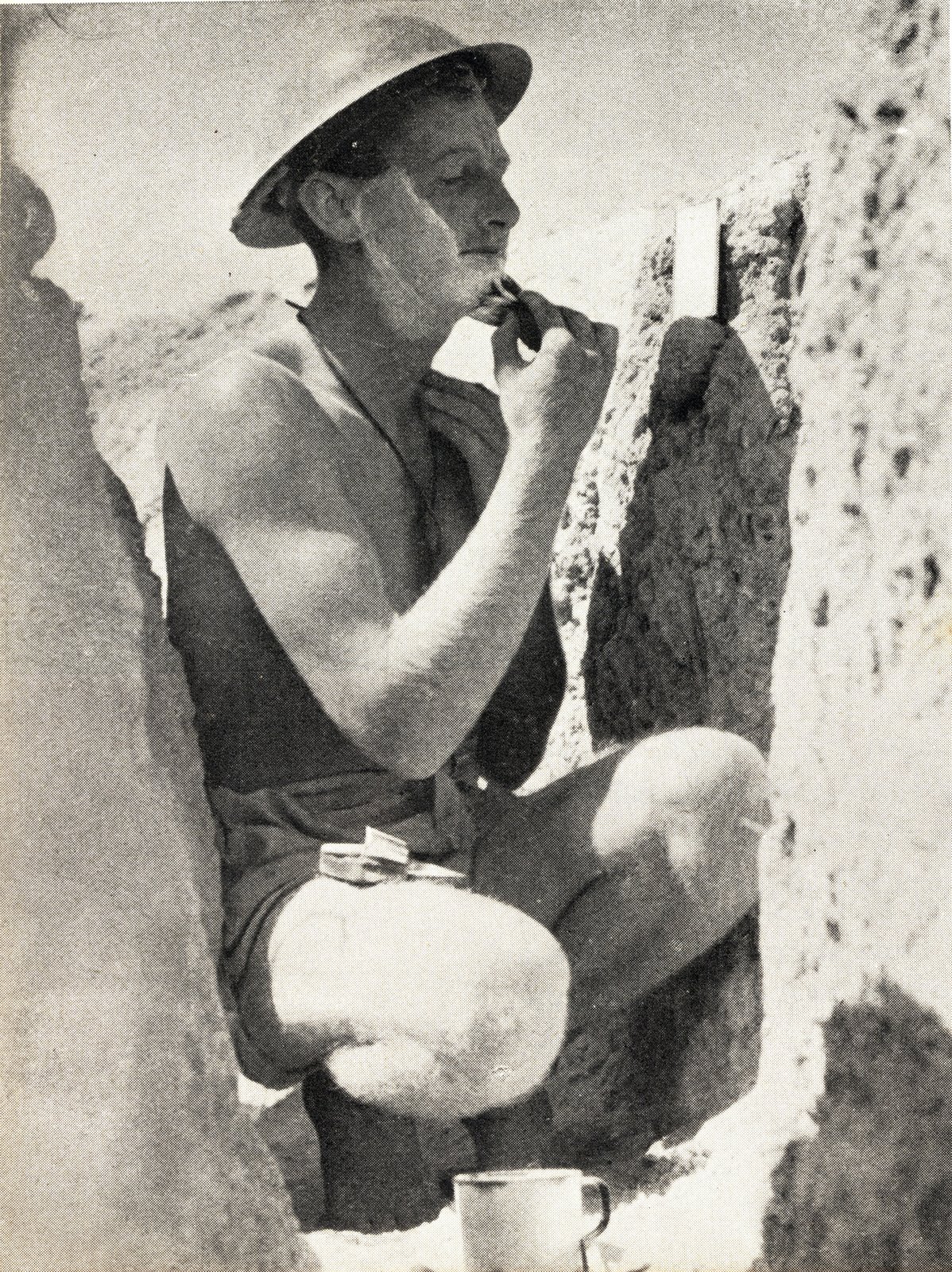Friday, August 29, 2008
[Quote] Lt. Tas Gill, 2/48th Battalion
Wednesday, August 27, 2008
[Image] The Price of Victory
[Image] 9th Div Salvage Unit under fire
[Image] Death of a Valentine
[Image] Take that Germany!
[Image] The Western Desert Today
[Image] What direct hit Sir?
[Image] Invaluable Aussie Advice

Sunday, August 24, 2008
[Image] A rare wash at Tobruk
[Image] A Lucky Escape at Alamein
[Memorial] Australian War Memorial, Tobruk
[Slang] Meet the Baitlayer
[Image] The P.M. and the Private.
SX13319 Pvt. Stanley Collins
2/23rd Infantry Battalion.
When touring the front lines Mr Churchill stopped to speak with Pvt. Collins of Adelaide. What happened next ensured that Pvt. Collins was the most famous man in the 9th Division for a day. He bummed a cigar off the Prime Minister of England.

When later asked by curious mates if he intended to smoke it, Pvt. Collins joked that he was going to take it home have it sealed in glass and would then pass it down as a family heirloom. Pvt. Collins survived the war, discharging in September, 1946 as Staff Sergeant Collins. It is not currently known if he did indeed take the cigar home with him in early 1943.
images 024760, 013354 & 013355 Australian War Memorial.
Thursday, August 21, 2008
[Quote] Lt Gen Erwin Rommel
[Image] Tobruk's Anti Tank Ditch
Wednesday, August 20, 2008
[Image] 9th Division scroungers at work
[Memorial] Alamein 9th Division Memorial

[Image] Phone for you Sir!
Tuesday, August 19, 2008
[Image] The German MG34 Machine Gun

Monday, August 18, 2008
[Image] Fleecing the Saffas
[Image] A letter home from Alamein
Sunday, August 17, 2008
[Image] Rommel in Colour
[Image] The Digger of Alamein
[Image] Crocodile Dundee of Tobruk

Saturday, August 16, 2008
[Image] Tobruk's Anti Aircraft Defenses
[Image] The RAAF drops in at Alamein.
[Image] German War Graves at Alamein
[Image] Death of a Stuka
 1941. Tobruk, Libya.
1941. Tobruk, Libya.[Image] The Crusader Tank
Friday, August 15, 2008
[Image] The Hessian Spitfire of Tobruk
Thursday, August 14, 2008
[Image] The business end of the Panzer Mk IV.
[Image] Captured German mortar is stamped "Return to Sender"

Saturday, August 9, 2008
[Image] German shells fall at Alamein
image 042082 Australian War Memorial.
[Image] The true origins of Beach Cricket

 "Slips Fieldsman" "another cracking shot"
"Slips Fieldsman" "another cracking shot"images 041992, 041993 and 041994 Australian War Memorial.
[Image] The Vickers of Tel el Eisa
Thursday, August 7, 2008
[Propaganda] 1941 AIF Recruitment Poster
[Image] Thirsty work this desert warfare.

[Image] Bren Carriers at Tel el Eisa

Tel el Eisa, Egypt. 1st August, 1942.
Bren Carriers advance in support of 9th Division troops.
[Image] "Monty" and THAT Slouch Hat.

 Here Montgomery is seen wearing the hat at Tel el Eisa after having toured the forward positions for himself. As he inspected his lines he passed through positions held by different forces under his command. At each opportunity Montgomery collected the hat badges of the units and attached them to his slouch hat. A good collection of them can be seen above.
Here Montgomery is seen wearing the hat at Tel el Eisa after having toured the forward positions for himself. As he inspected his lines he passed through positions held by different forces under his command. At each opportunity Montgomery collected the hat badges of the units and attached them to his slouch hat. A good collection of them can be seen above.
Reactions to Montgomery's choice of hat varied. Members of the Royal Australian Artillery stated that he looked like a "prize galah", whilst members of the Infantry saw it as an honour that out of all the different nationalities and units under his command that he chose an Australian Slouch Hat. In spite of all the inherent practicalities of such a hat in the Western Desert it was a real morale boost for members of the 9th Division to see Monty in their hat.
Others however were not convinced as to the suitability of their General wearing this hat and members of the Royal Tank Regiment saw to it that they presented Monty with a black beret in the hope that he would restore order and wear appropriate head dress. Someone must have had a quiet word to the General as he gave up his adored slouch hat and wore the Royal Tank Regiment's beret for the rest of the Western Desert campaign.
 Lieutenant General Bernard Law Montgomery CB, DSO's slouch hat is currently in the collection of the Australian War Memorial at Canberra, Australia.
Lieutenant General Bernard Law Montgomery CB, DSO's slouch hat is currently in the collection of the Australian War Memorial at Canberra, Australia.
images 041980, 044866 and RELAWM30701 Australian War Memorial.
Tuesday, August 5, 2008
[Image] "...a brave, dashing and resourceful soldier." - Morshead.

- "Failing to appear at a place of parade appointed by a commanding officer" for which he was fined 10 shillings and 7 days pay.
- "Conduct prejudicial to a Commanding Officer's Military Discipline" for which this offence cost him a fine of 20 shillings.
In spite of his reported disciplinary issues Pvt. O'Connell showed all of his commanding officers that they were wrong about him and proved himself a soldier when it mattered most, when with his mates and under fire.
It was whilst Pvt. O'Connell MM was with his mates and under fire at Tel el Eisa on the night of 22nd July, 1942 that he was killed in action. He is buried at the El Alamein War Cemetery. He is memorialised on the Roll of Honour here;
http://www.awm.gov.au/roh/person.asp?p=147-17814
At the time of his death, like too many of the men killed at Alamein, Pvt. Morris Joseph O'Connell was 23 years old.
image 022764 Australian War Memorial
Pvt. O'Connell's entire digitised service record can be viewed at the National Archives Website. See the link in the sidebar on the right under "Research Links".
[Image] 2/13th Mortar support at Tel el Eisa
You can see what appear to be vehicles of some description on the horizon. Whatever they are they are above ground level and in this case a very valid target. You can see also a plume of smoke in the distance in the direction of fire of Pvt. Myers’ mortar. There also appears to be another dug in position several hundred yards in front of Pvt. Myers’ position. As he is firing live rounds in that direction my guess is that’s where Gerry calls home.
This photo taken not far above ground level can give you an appreciation of just how dangerous it would be to be caught in the open of the desert during a shell attack. Your only hope would appear to be to keep moving forward.
Pvt. Myers seems to have quite a bit about the top of his weapons pit. A Lee-Enfield .303 rests on the sandbags behind him as too does his cigarettes and matches. He looks like he has more mortar ammo to his right within easy reach and he is wearing the commonwealth Tin Hat with hessian cover.

images 0941967 and 041968 Australian War Memorial.
































